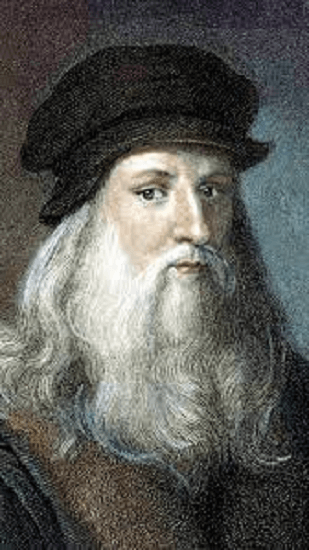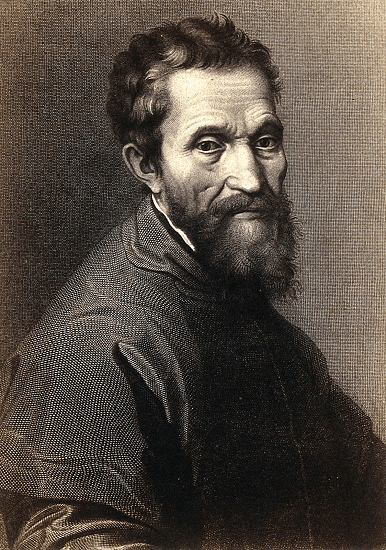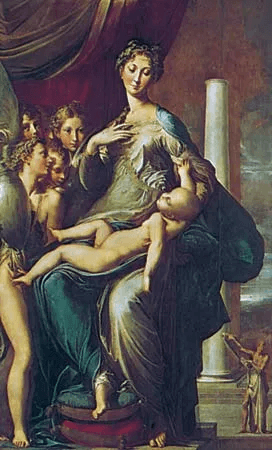Renaissance DefinitionThe Renaissance was a European period that witnessed a cultural explosion. The Renaissance is described as a revival or rebirth of art and culture. The main location of the Renaissance was Italy due to its position prominently on the Mediterranean Sea. Italy was the capital of commerce in the region between Europe and Eurasia in the 14th through 16th centuries. Artists, sculptors, and architects displayed a similar spirit of adventure and thirst for knowledge and the development of new strategies. In the Renaissance, artists were not considered mere artisans like in the past. However, for the first time, they were recognized as distinct personalities compared to poets and writers. Numerous artists combined mathematics with art to improve the accuracy of their measurements and ensure that the object is supported rationally and proportionally. But Renaissance artists also put the human experience and emotions as the main focus of their work. The optimism of the Renaissance, paired with growing intellectual curiosity and the world, made it possible for the art of the Renaissance to be valued. All in all, the Renaissance art movement completely discredited the Middle Ages as it was a period of immense destruction, barbarism, and illiteracy, and it rendered the Byzantine, Romanesque, and Gothic styles of art worthless. The Renaissance was the result of a revival of Classical notions, ideas, and understanding. Things that had been discarded were now the center of society. Also, it was discovered that during Classical times, artists enjoyed a higher amount of respectability than they enjoyed in those times of the Middle Ages. Artists wished to have the status they had once enjoyed for a long time before the Middle Ages. The Renaissance lasted many years. Perhaps this is a sign of the awe-inspiring popularity it enjoyed in the past and today. The Italian Renaissance can be divided into three distinct phases, referred to by the names of Early, High, and Late. These stages were preceded by the Gothic art movement that served as an intermediary between the Middle Ages and the Renaissance, which was then immediately followed by Mannerism, which bridged the gap between Renaissance and Baroque. Mannerism had little impact on the prevalent, popular art styles at the time and could be unfit to be included within the well-defined art genres as historians reflected on the time. Early RenaissanceEarly Renaissance art was the dominant theme during the period of the 15th century and was characterized by its inspiration from antiquity. The focus of the movement was Florence, Italy, because this city had drawn attention to its own plight through conflicts with the church as well as with the surrounding communities. The form of art was centered around people, the spatial dimension, and the law of proportions when it came to architecture. It was believed that advancement and growth were the basis of the development and longevity of the art. Masaccio was the primary painter of that time. He did not derive inspiration from other painters. The sculptor Donatello and the architect Brunelleschi were major sources of his inspiration. His work was religious in nature. High RenaissanceThe early Renaissance focused on behavior and personality. However, the High Renaissance emphasized physical presence, drama, and balance. There were many major artists in that period, including Leonardo da Vinci, Donato, Bramante, Michelangelo, Raphael, and Titian. The period was brief between 1495 and 1520 and was an interval of transition between the early and late Renaissance. Although it was brief, it was a time of great art. The work that emerged during this period was extraordinary, and many of the world's most famous artists of all time created works during this period. In the end, these artists were so in control over their abilities that they could create any natural effect that they wished to create and had the ability to see the balance and harmony, as well as the finest of details. The term used to describe them was known as "Renaissance man." 
The phrase " Renaissance man " denotes someone with extraordinary capabilities in a wide range of areas. The term is used to describe many people during the Renaissance. However, there are two notable people who could be considered for this name. They are Leonardo da Vinci and Michelangelo. The older guy, Leonardo, had exceptional abilities to excel in two completely different fields that were experimental science and visual arts. On the other hand, when it comes to artistic excellence by itself, Michelangelo must be a person to be admired by all. His works are all top-quality and in four different fields- sculpture, painting, poetry, and architecture. Late RenaissanceThe late Renaissance was a period of change that began with the fall of Rome in 1527. Artists were forced to move across Italy, France, and Spain. This led to the development of what's now known as Mannerism. The Mannerism artists began producing portraits of individuals, usually naked, who was depicted with strange poses and appeared at times grotesque, while bizarre subjects were used. The paintings appeared horrifying. Michelangelo was the sole artist who was part of both the High and Late Renaissance periods. 
The increasing focus on individualism during the Renaissance changed the status of composers in society. In contrast to their predecessors in the medieval period, Renaissance composers were recognized much more frequently throughout their lives. The technology of printing allowed the diffusion of their work and allowed a wider audience in the field of study. Although spiritual music was in the lead, the secular genre was becoming more popular than in the earlier era. The range of instrumental music was becoming more diverse with the creation of brand-new instruments, and a lot of instruments from time have been upgraded. Humanism is believed as the major philosophical movement during the Renaissance. As its name suggests, humanism was an ideology that was distinguished by its interest in the historical activities of human beings in general and their impact on the world along with religion. Before Renaissance theology, Medieval Europe believed that life was a sinful thing and that individuals ought to be solely concerned with the duty they owe to God and eternal life. Humanists believe that each person is worth respecting and should be valued and worthy of respect for each individual. Humanists began their movement at the beginning of the Italian Renaissance with the rediscovery of writings written by classical Greeks and Romans that were more than just literary styles to be emulated and style but were also considered sources of understanding living. The Renaissance movement brought about the use of oil-based paints. This proved to be a blessing for artists because, thanks to the long drying times for oil-based paints, they were able to alter their work and make changes over the course of months. Artists could concentrate more on the quality of light in their artworks and also be more attentive to the architectural precision of architecture that was the backdrop of their paintings. The themes were focused on Greek or Roman mythology and Biblical characters, and the Madonna was an iconic character. For representations of human anatomy, it was commonplace to place emphasis on the body's nakedness as well as the beauty of the human body. 
One of the most significant outcomes of the Renaissance was that artists were able to connect more closely with writers, poets, and philosophers. They also began to interact with scientists. The lines between these fields started to disappear, and they started to exchange ideas and began to recognize each other for the true visionaries that they were. The reason for this revival of visual art remains a mystery; 14th-century Europe saw a number of devastating harvests, such as the Black Death (1346) and the ongoing conflict that raged between England and France. It was not the best environment to spark creativity and a continuous emergence of drawing, painting, and sculptures and the construction of new buildings. In addition, the Catholic Church, the most important supporter of the arts, was plagued by disagreements over the spiritual and secular aspects. Also, prosperity was gaining momentum in Northern Europe, as evidenced by the advent of Germany of the Hanseatic League of Cities. The growing wealth offered financing for a rising quantity of big commissions, arts, and public projects. The trade routes on which it was built helped spread ideas and expanded movements throughout the Continent. In addition to the spread of ideas, which also was speeded up considerably due to the invention of printing, there was an unquestionable sense of discontent with the slow progress of change after millennia of intellectual and social hunger; Europe and especially Italy were waiting for an epoch of renewal. In the end, the Renaissance was the source of many of the most famous artworks ever made throughout human history. It was a period that was a time of revival, of looking back to something from the past that was working and then bringing it to a new perspective. In more than five hundred years, we are still amazed at the work of great artists like Da Vinci and Michelangelo. Humanism rejected the dogmas of secular and religious belief and instead gave the most significance to the worth and dignity of each individual. The period was distinctive in depicting the human body and how it incorporated the sciences and art. This was proof of how the past and the future could coexist harmoniously.
Next TopicSalary Definition
|
 For Videos Join Our Youtube Channel: Join Now
For Videos Join Our Youtube Channel: Join Now
Feedback
- Send your Feedback to [email protected]
Help Others, Please Share










